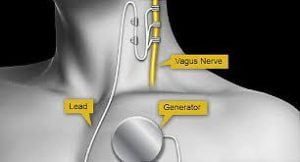What is Lennox-Gastaut syndrome?
Lennox-Gastaut syndrome (LGS) is a rare and serious type of epilepsy that begins in childhood. Children with LGS have seizures often, and they have several different types of seizures.
This condition is difficult to treat, but researchers are looking for new therapies. Finding practical and emotional support is key to helping you give your child the best quality of life while facing the challenges and stress that this illness brings.

What are the Causes of Lennox-Gastaut syndrome?
Doctors don’t always know what caused a child’s LGS. In some cases, it could be caused by:
- Lack of oxygen during labor.
- Serious brain injuries related to pregnancy or childbirth, such as low birth weight or premature labor.
- Brain infections (such as encephalitis, meningitis, or rubella)
- Seizures that start in childhood, called infantile spasms or West syndrome
- A brain problem called cortical dysplasia, where some nerve fibers in the brain don’t line up right during development in the uterus.
- Tuberous sclerosis, where noncancerous tumors form in many places in the body, including the brain.
- Genetics
What are the Symptoms of Lennox-Gastaut syndrome?
Children with LGS have frequent and severe seizures.
Seizures generally start between 2 and 6 years old. Children with LGS have learning difficulties and developmental delays (such as sitting, crawling, walking) that can be moderate to severe. They may also have behavioral problems.
Each child develops differently and it is impossible to predict how a child with LGS will fare. While most children have continuous seizures and some form of learning disability, some may respond well to treatment and have fewer seizures.

Children sufferiing with LGS, often have different types of seizures,
including :
Atonic seizures. Also called “fall attacks” because the person loses muscle tone and can fall to the ground. Your muscles may jerk. These seizures are brief, usually lasting a few seconds.
Tonic seizures. These seizures make the person’s body stiff and can last from a few seconds to a minute. They usually occur when the person is asleep. If they occur when the person is awake, they can cause falls. Like atonic seizures, they are also called fall attacks.
Absence attacks. During these seizures, a person may have a blank stare or nod or blink rapidly.
In some children, the first sign of LGS is a continuous seizure lasting 30 minutes, or continuous seizures without a full recovery between them. This is called Status Epilepticus and it is a medical emergency.
People with LGS may also have a slower reaction time. Some have trouble learning and processing information. They may also have behavioral problems.
How to Diagnose Lennox-Gastaut syndrome?
Your doctor will look for three signs to diagnose LGS:

- Multiple types of seizures that are difficult to control.
- Delayed development or intellectual disability.
- An electroencephalogram (EEG) showing a specific type of pattern, called a slow peak wave pattern, between seizures. An EEG uses a machine to record electrical activity in the brain.
- MRI scan to detect the focal lesions.
What are theTreatment modalities ?
Medicines
Doctors can prescribe a variety of medications to treat LGS seizures. The goal is to reduce the number of seizures with medications that cause the fewest side effects. Finding the right treatment for your child will probably take time and close coordination with the doctor. Medications used to treat seizures include:
- Cannabidiol
- Clobazam
- Felbamate
- Lamotrigine
- Rufinamide
- Topiramate
- Valproate, valproic acid
Generally, no single medication completely controls seizures. The doctor will closely monitor your child’s medication, especially if your child takes more than one at a time.
Diets
A special high-fat, low-carbohydrate diet, called the ketogenic diet, helps some people with epilepsy, including some children with LGS. It is a high fat, low protein and low carbohydrate diet. It must be started specifically and followed very strictly, so you need a doctor’s supervision.
Doctors aren’t sure why the keto diet works, but some studies show that children with epilepsy who follow the diet have a better chance of reducing their seizures or medications.
Your doctor will look closely to see whether the medication levels can be reduced or when. Because the diet is so specific, your child may need to take vitamin or mineral supplements.
For some children, a modified Atkins diet may also work. It is slightly different from the ketogenic diet. You don’t have to restrict calories, protein, or liquids. Also, it does not weigh or measure food. Instead, monitor carbohydrates.
People with seizures that are difficult to treat have also tried a low glycemic index diet. This diet focuses on the type of carbohydrates, as well as the amount someone eats.
Surgery
If medications and other treatments don’t reduce the number of seizures, your doctor may suggest surgery.
- Vagus nerve stimulation, which involves implantation of a battery-powered generator of intermittent electrical stimuli into an electrode wrapped around the left vagus nerve. Some studies have been shown to have a more than 50% reduction in reported seizures in more than half of patients.

- Corpus callosotomy, which has been shown to be effective with atonic seizures. This procedure is considered in cases where vagus nerve stimulation has failed.

- Trans cranial direct current stimulation
- Resection
What to expect in a case of Lennox-Gastaut syndrome?
Raising a child with LGS is difficult. If your child has frequent seizures, you may need to wear a helmet to protect him if he falls. You may have to deal with behavioral issues like acting and the side effects of anticonvulsant medications.
There is no cure for LGS, although there is a lot of research to find treatments that work best.

